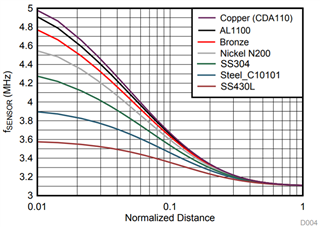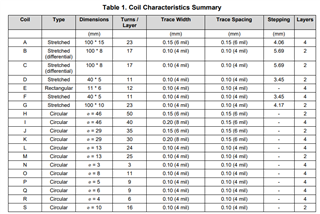Other Parts Discussed in Thread: , LDCCOILEVM, LDC2112, LDC3114, FDC1004
Dear all,
I am in process of designing an inductive buttons. In my design I am interested to use the LDC2114 and the size of the coil would be around 4 mm. There will be some plastics (I am not sure of the material and the dimension yet) between the coil and the shaft of the button pressed. Is there a relationship that I would know the following please:
1- What would be the size of the shaft if my coil is 4 mm?
2- What material should be my shaft to have a better detection?
3- How thick and what material would be the plastic?
4- How far should be the distance between the shaft and the plastic?
Thanks in Advance,
Ali





